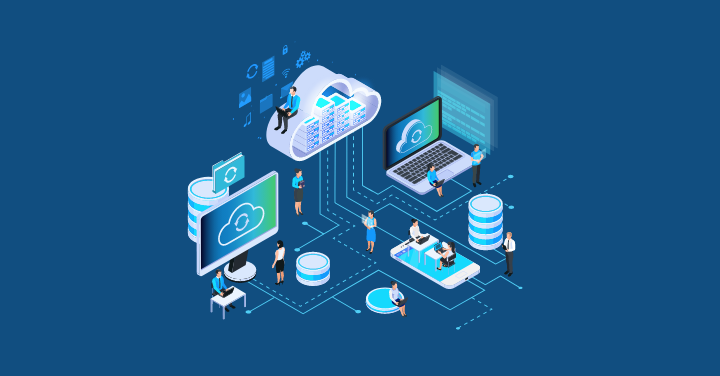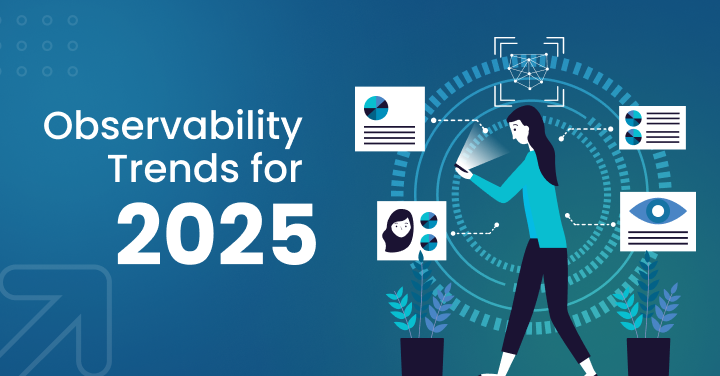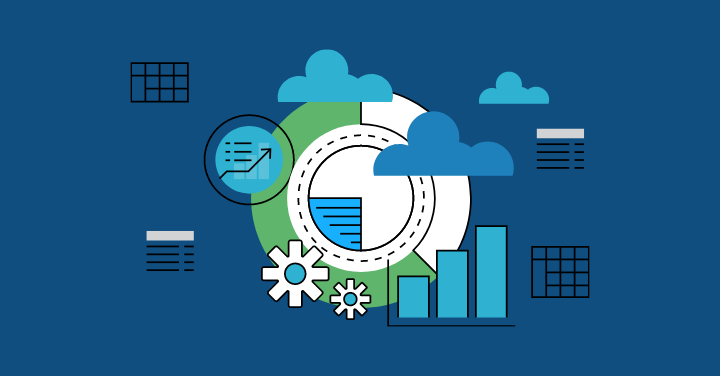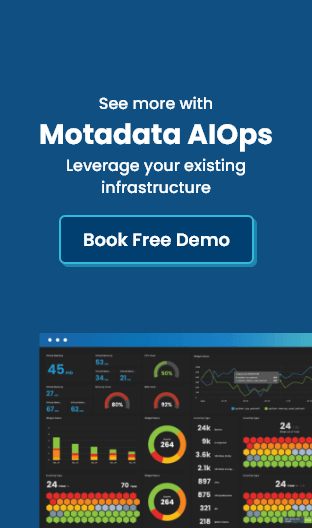Introduction: The Critical Choice in IT Observability
tool evaluations are ManageEngine and SolarWinds. Both offer powerful solutions — but they come with distinct philosophies, architectures, and trade-offs that must be understood before making a commitment.
This article offers an objective comparison of ManageEngine and SolarWinds observability solutions, focusing on key technical and functional aspects to aid your evaluation process.
ManageEngine & SolarWinds
ManageEngine (Zoho Corp)
The IT management branch of Zoho Corporation, a well-known player in the SaaS market worldwide, is called ManageEngine.
ManageEngine’s portfolio has grown over the years to include solutions for cloud monitoring, endpoint security, network monitoring, IT service management (ITSM), and log management.
Small to mid-sized businesses (SMBs) and mid-market companies seeking feature-rich, modular, and reasonably priced IT management solutions have adopted its tools.
The modular approach of ManageEngine is one of its key features; businesses can select specific tools according to their current requirements without having to purchase an expensive, bundled suite.
IT teams that value scalability and cost reduction without compromising essential functionality frequently find this flexibility appealing.
Market Perception:
ManageEngine is often viewed as the “Swiss Army knife” of IT operations — offering a wide variety of point solutions at competitive price points.
While its tools are powerful individually, users sometimes cite the need for deeper integration across modules when scaling up toward broader observability or enterprise-grade deployments.
SolarWinds
A veteran in the IT infrastructure management field, SolarWinds has built its name mostly on its flagship Orion system.
It is particularly well-known for providing strong network performance monitoring, server visibility, and infrastructure optimization tools vital for preserving uptime in big corporate settings.
Although SolarWinds began with network management, it has expanded its reach to hybrid IT management, cloud visibility, database performance analysis, and application performance monitoring (APM).
Its single dashboard on the Orion platform combines many components to provide a combined perspective many IT teams value for controlling complicated systems.
Market Perception:
Larger companies needing high-scale, agentless network monitoring with strong event correlation and alerting often choose SolarWinds.
SolarWinds, on the other hand, finds additional competition from newer, more nimble observability systems in the fast expanding cloud-native and microservices monitoring sectors.
Core Observability Pillars: How We’ll Compare
To provide a fair and practical evaluation, we’ll compare ManageEngine and SolarWinds across seven essential dimensions critical to modern observability:
- Platform Architecture & Data Handling
- Monitoring Scope
- Log & Flow Management
- Alerting & Reporting
- Ease of Use & Deployment
- Licensing & Support
By focusing on these pillars, we aim to uncover how each platform aligns with the evolving demands of IT operations and infrastructure management.
Let’s dig in.
ManageEngine OpManager Plus vs SolarWinds Orion: A Detailed Comparison
1. Platform Architecture & Data Handling
Both vendors offer robust architectures — but with notable design differences.
| Feature | ManageEngine | SolarWinds |
|---|---|---|
| Platform Approach | Modular (requires add-ons) | Modular (integrated via Orion Core) |
| Database | Third-party (PostgreSQL, MSSQL) | MS SQL Server (paid licensing) |
| Data Polling Granularity | 1 minute (default) | 10 seconds (default) |
| Data Retention | Raw data aging post 30 days | Raw data averaging after 30 days |
| Visualization Latency | Moderate (varies per module) | Fast (tight Orion integration) |
My Experience:
SolarWinds often feels tighter when visualizing real-time network spikes due to faster polling. However, the cost of maintaining SQL Server licenses and database tuning becomes noticeable over time. ManageEngine’s modularity adds flexibility — but sometimes at the cost of integration complexity.
2. Monitoring Scope
| Area | ManageEngine | SolarWinds |
|---|---|---|
| Network Monitoring | Strong | Very Strong |
| Server Monitoring | Good (Linux/Windows) | Good |
| Virtualization | vCenter, Hyper-V integrations | vCenter, Hyper-V integrations |
| APM Monitoring | Separate product (Applications Manager) | Separate product (SAM, DPA) |
| Area | ManageEngine | SolarWinds |
|---|---|---|
| Cloud Monitoring | Limited (requires add-ons) | Limited (AWS, Azure with add-ons) |
| Log & Flow Integration | Requires add-ons (Firewall Analyzer, NetFlow) | Requires modules (NTA, LEM) |
My Experience:
Both vendors can cover traditional IT environments well. But if you’re heavily cloud-native (AWS/GCP/Azure) or need full APM without stitching different modules, you’ll start feeling the friction.
3. AI & Advanced Analytics
| Feature | ManageEngine | SolarWinds |
|---|---|---|
| Anomaly Detection | Available (Statistical) | Available (Baseline deviation) |
| Forecasting | Limited (capacity trend) | Limited (capacity forecast) |
| Dependency Mapping | Available (Layer 2/3) | Available (NPM Topology, SAM AppStack) |
| Automation (Runbooks) | Available (workflows) | Available (Automated Actions) |
My Experience:
While both vendors offer AI-like features, they feel more like “add-ons” rather than core DNA of the platforms. You get anomaly alerts, but limited predictive analytics across entire data streams unless you integrate more products.
4. Log & Flow Management
| Feature | ManageEngine | SolarWinds |
|---|---|---|
| Centralized View | No (Firewall Analyzer/Netflow separate) | No (LEM/NTA separate) |
| Log Parsing & Search | Available | Available |
| Advanced Features (Pattern Detection, Live Tail) | Limited | Limited |
My Experience:
Both tools treat logs and flow data as somewhat secondary. Serious log analytics (like live tail, pattern recognition) requires significant additional licensing and integration effort.
5. Alerting & Reporting
| Feature | ManageEngine | SolarWinds |
|---|---|---|
| Alert Customization | Strong | Strong |
| Event Correlation | Limited | Available (Event correlation engine) |
| Advanced Reporting | Good | Good |
My Experience:
SolarWinds has an edge with advanced event correlation. ManageEngine compensates by offering more visual and accessible dashboarding across some modules.
6. Ease of Use & Deployment
| Feature | ManageEngine | SolarWinds |
|---|---|---|
| Installation | Moderate to Complex (depending on modules) | Complex (multi-server architecture) |
| Agent Requirements | Required for full functionality | Largely Agentless |
| UI/UX | Modern but inconsistent | Classic (familiar but aging) |
My Experience:
ManageEngine feels lighter for smaller deployments. But as environments grow, managing multiple agents can get messy. SolarWinds’ Orion interface is rock solid but can feel overwhelming if you don’t customize it properly.
7. Licensing & Support
| Feature | ManageEngine | SolarWinds |
|---|---|---|
| Licensing Model | Per module/feature | Per element (node, interface, volume) |
| Cost Complexity | Medium | High |
| Support | Standard 24/5 + Community | Standard 24/7 + Community |
My Experience:
SolarWinds’ element-based licensing can spiral quickly if you don’t scope it properly. ManageEngine’s module-based licensing offers predictability but requires careful capacity planning if adding features later.
Key Differentiators Summarized
ManageEngine Strengths
ManageEngine shines when it comes to offering a broad portfolio of IT management solutions. From network monitoring and ITSM to log management and endpoint security, it covers a wide range of operational needs.
This allows organizations to find tailored solutions without being forced into expensive, bundled enterprise licenses.
Its solutions are also recognized for good cost-effectiveness, especially for small and mid-sized IT teams.
ManageEngine provides essential monitoring capabilities at a price point often more accessible than larger enterprise-focused competitors, making it attractive for organizations with tight budgets.
Another notable strength is its highly visual dashboards. Many users appreciate the clean, customizable interface, which offers an intuitive way to view network performance, system health, and operational metrics in real-time.
Lastly, flexible deployment options allow teams to choose between on-premises, cloud, or hybrid environments based on their IT strategy.
This adaptability has made ManageEngine a popular choice across diverse industries.
ManageEngine Weaknesses
However, ManageEngine’s modular approach can also lead to a fragmented product experience. As organizations grow, stitching together multiple modules (for logs, flows, APM, cloud monitoring) can create integration complexity and management overhead.
Another drawback is the dependency on third-party databases such as PostgreSQL or Microsoft SQL Server.
Managing these databases can introduce additional licensing costs and maintenance responsibilities that aren’t immediately apparent at the outset.
From a performance perspective, ManageEngine typically operates on a 1-minute polling interval by default.
While sufficient for many cases, this may fall short in high-frequency, real-time environments where 10-second or sub-second polling is critical.
Additionally, for organizations aiming for full-stack observability (metrics, logs, flow, applications), ManageEngine often requires separate products or add-ons, which could increase overall complexity and licensing costs over time.
SolarWinds Strengths
SolarWinds is highly regarded for its deep expertise in network monitoring. Its Orion platform provides robust, granular insights into network health, traffic analysis, and device performance, making it a trusted tool in enterprise IT environments.
The platform’s agentless deployment model reduces setup complexity, particularly for organizations that prefer minimizing endpoint overhead and configuration efforts.
SolarWinds also offers enterprise-grade event correlation capabilities, allowing IT teams to link multiple performance events, understand root causes faster, and optimize incident response.
Finally, the familiar interface of Orion is a strong point. IT professionals who’ve worked with SolarWinds for years often find its UI familiar and efficient, requiring little to no retraining.
SolarWinds Weaknesses
That said, SolarWinds also has notable limitations. Its dependency on MS-SQL databases adds licensing and operational costs, sometimes becoming a burden in large-scale deployments.
Another constraint is limited raw data retention. After a period (typically 30 days), SolarWinds averages performance data, which can hinder long-term forensic analysis or trend spotting.
The complex element-based licensing model — where nodes, interfaces, and volumes are all counted separately — can also make budgeting unpredictable and escalate costs quickly.
Lastly, despite its strong legacy, SolarWinds exhibits feature gaps in newer observability areas like cloud-native monitoring, advanced log analytics, and AI-driven automation, limiting its appeal for organizations moving toward cloud-first or hybrid architectures.
Is There a Different Approach? Consider Motadata Unified Observability Platform
While ManageEngine and SolarWinds have long covered the traditional needs of network and infrastructure monitoring effectively, modern IT environments demand a new level of agility, intelligence, and unification.
Today’s IT teams don’t just need visibility — they need fast, predictive, and proactive observability across complex, hybrid, and cloud-native architectures.
Here’s where the challenges with traditional platforms begin:
- Unified visibility across Metrics, Logs, and Flows is often missing, with data scattered across separate modules or third-party integrations.
- AI and Machine Learning capabilities are typically bolted on later rather than being an integral part of the platform’s DNA.
- Low-latency, high-granularity data collection is crucial for real-time troubleshooting — but most legacy tools still default to 1-minute or 5-minute polling intervals.
- Simplified deployment is key, yet older platforms often require heavy third-party database setups (e.g., MS SQL Server), adding to operational burden and hidden costs.
This is precisely where Motadata Unified Observability Platform stands apart as a modern alternative — purpose-built for dynamic, high-speed IT ecosystems.
Motadata’s Advantages: Built for the Future of Observability
1. Truly Unified Platform
One of the defining strengths of Motadata Unified Observability Platform is its commitment to true unification.
Unlike many traditional vendors who stitch together multiple point solutions — often resulting in integration complexity and data silos — Motadata consolidates everything within a single, cohesive platform.
Metrics, Logs, and Flow data are not just collected independently; they are processed, correlated, and visualized together within a common datastore and interface.
This holistic approach significantly enhances root cause analysis (RCA) capabilities. IT teams no longer have to juggle between different consoles or manually connect dots across separate modules.
End-to-end visibility becomes native, not constructed through third-party integrations. This reduces operational overhead, eliminates data blind spots, and speeds up incident resolution.
By providing a truly unified platform, Motadata ensures that every piece of performance and operational data contributes meaningfully to a complete, actionable observability story.
2. Built-In Capabilities
In today’s complex IT environments, AI and Machine Learning are no longer optional — they must be at the heart of your observability strategy. Motadata Unified Observability Platform was designed with this reality in mind.
Rather than offering AI/ML as a bolt-on enhancement, Motadata embeds Unified Observability Platform into the platform’s very core. It delivers:
- Deep anomaly detection across all monitored datasets, helping surface issues before they escalate.
- Automated baselining that continuously learns what “normal” looks like, so deviations are spotted instantly.
- Intelligent forecasting to predict resource needs, application performance trends, and potential risks well before they impact services.
- Root Cause Analysis (RCA) powered by advanced event correlation and dependency mapping, drastically cutting down troubleshooting time.
With these capabilities, IT teams move from a reactive posture — scrambling after incidents — to a proactive, self-healing model that drives uptime and resilience.
3. Superior Data Handling
Data accuracy and timeliness are at the heart of effective observability.
Motadata stands out by offering 1-second data granularity, allowing for near-instantaneous detection of fluctuations across networks, applications, and infrastructure.
Unlike older systems that begin averaging or rolling up raw data after just 30 days, Motadata provides extended raw data retention options.
This empowers IT teams to perform deep, forensic analysis on historical incidents — even months later — with full fidelity.
Such high-precision data handling is crucial for modern IT environments where milliseconds matter, whether it’s detecting a network bottleneck, spotting an application slowdown, or analyzing subtle performance degradation trends over time.
4. Simplified Architecture
Deploying and managing observability platforms shouldn’t create new operational burdens.
Motadata’s architecture is intentionally designed to simplify, not complicate, IT operations.
By leveraging a proprietary datastore, Motadata removes the need for costly, resource-intensive third-party database licenses such as MS-SQL or PostgreSQL.
This not only lowers total cost of ownership but also improves scalability, reduces maintenance overhead, and speeds up initial deployment timelines.
For growing organizations that need agility without ballooning infrastructure complexity, Motadata’s simplified backend becomes a substantial advantage.
5. Advanced Log and Flow Management
In many traditional platforms, advanced log and flow analytics require purchasing and integrating separate products — adding to both cost and complexity.
Motadata takes a different route: Advanced log and flow management features are built into the platform by default.
Users gain access to capabilities like:
- Live Tail for real-time log streaming and troubleshooting
- Dynamic parsing to interpret and correlate unstructured data
- Pattern recognition and anomaly detection within flow and log streams
By correlating metrics, logs, and flows natively, Motadata dramatically shortens Mean Time to Detect (MTTD) and Mean Time to Resolve (MTTR), ensuring faster recovery from incidents and sharper operational clarity.
In short, Motadata doesn’t just collect observability data — it operationalizes it intelligently and intuitively.
6. Straightforward Licensing
Motadata simplifies licensing with a device/instance-based model, eliminating the complexity of counting nodes, interfaces, or volumes.
This approach offers clear advantages: predictable budgeting, easier scalability, and better alignment with today’s hybrid and dynamic IT environments.
Unlike traditional platforms that require separate licensing for modules like logs, flows, or APM, Motadata bundles these capabilities under a unified structure.
This not only prevents surprise overages but also supports smoother infrastructure growth without licensing bottlenecks.
In essence, Motadata’s licensing model gives IT teams full operational flexibility while maintaining cost transparency and control.
Making Your Choice: Aligning Tools with Your Needs
When evaluating observability platforms, the right decision isn’t necessarily about the brand — it’s about alignment with your needs.
Ask yourself:
- Do I prefer a single unified console or managing separate modules for logs, flows, and metrics?
- How critical are predictive insights, anomaly detection, and automated remediation for my operational success?
- Am I ready to deal with additional third-party database costs or modular licensing complexities?
- Do I have the capacity to manage multiple agents, databases, and disconnected products, or would I benefit from a streamlined architecture?
- What are my immediate priorities — network monitoring, cloud observability, APM, or security-driven insights?
Taking time to map your technical requirements against these realities can save significant cost, complexity, and operational headaches down the road.
Conclusion: Finding Your Observability Fit
ManageEngine and SolarWinds have earned their reputations as trusted monitoring vendors.
They continue to deliver significant value for traditional IT infrastructure monitoring use cases, especially in network-heavy or on-premises environments.
However, as businesses increasingly adopt cloud-first strategies, hybrid IT models, and automation-driven operations, the limitations of modular, stitched-together observability solutions become harder to ignore.
Modern IT leaders are looking for faster insights, deeper integration, and smarter automation — not patchwork tools.
If you’re ready to move beyond fragmented point solutions and build a proactive, unified, AI-native observability framework, Motadata Unified Observability Platform represents a forward-thinking choice that can elevate your IT operations to new heights.
Explore Motadata Further
Ready to see a unified observability platform in action?
- Compare Motadata with ManageEngine
- Compare Motadata with SolarWinds
- Learn about Motadata Observability
- Schedule Your Custom Demo
- Start a No-Obligation Free Trial
Take the next step toward transforming your IT observability journey — intelligently, efficiently, and confidently.






